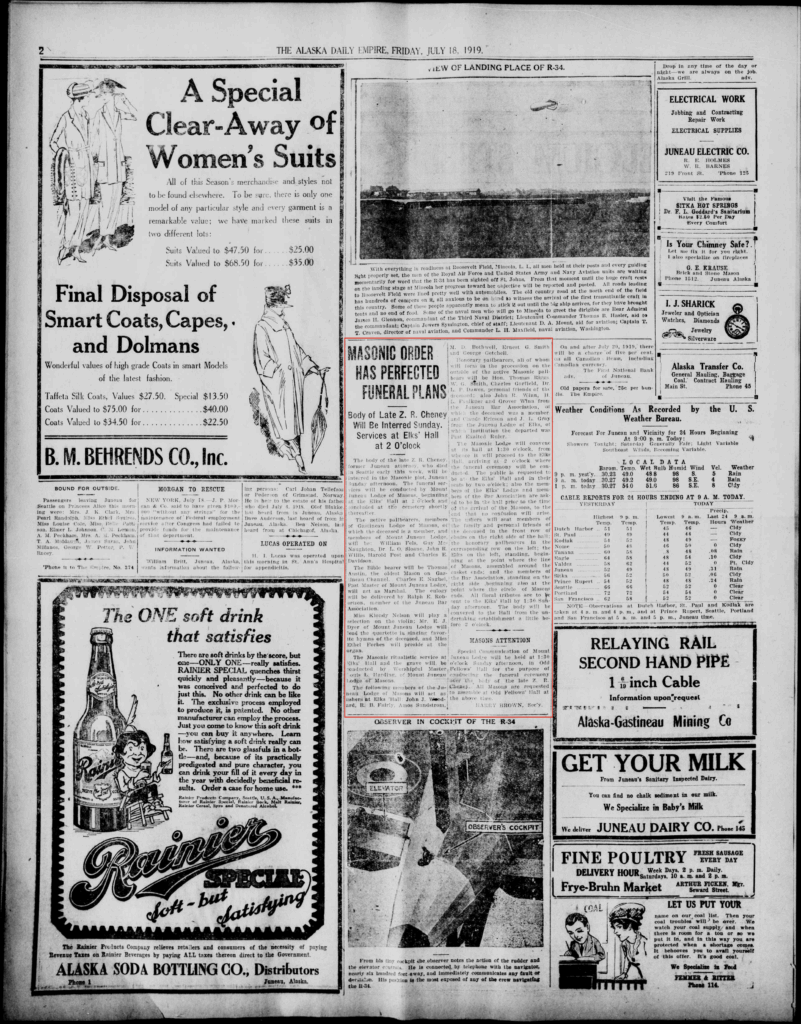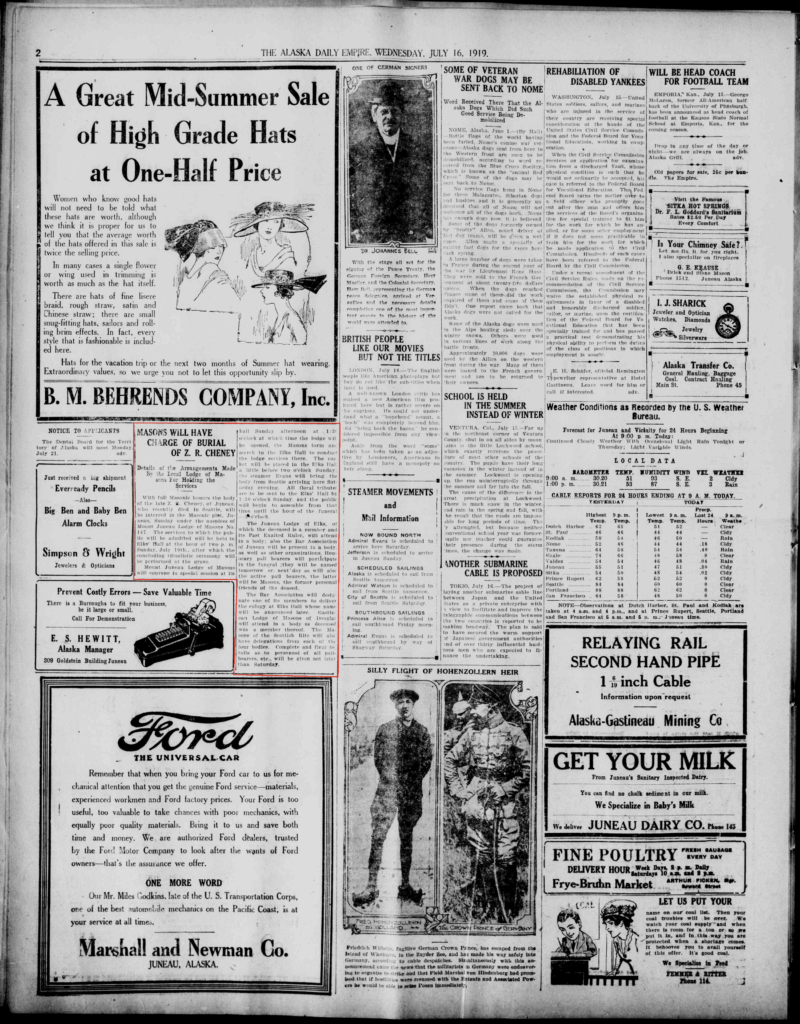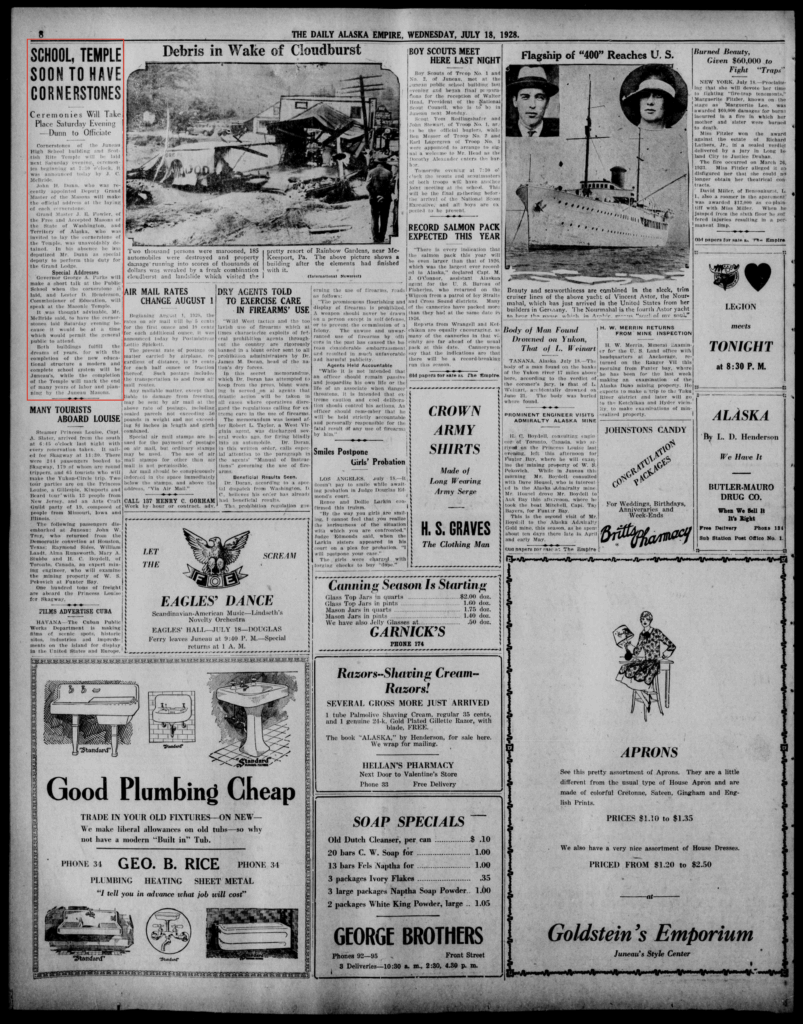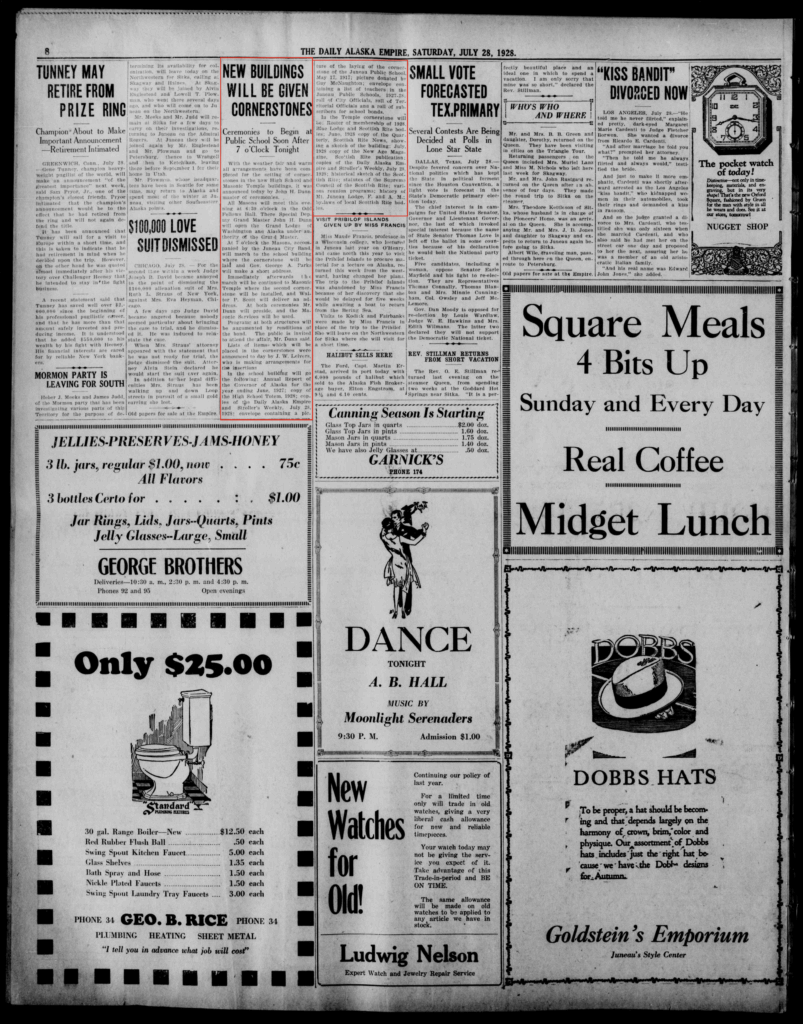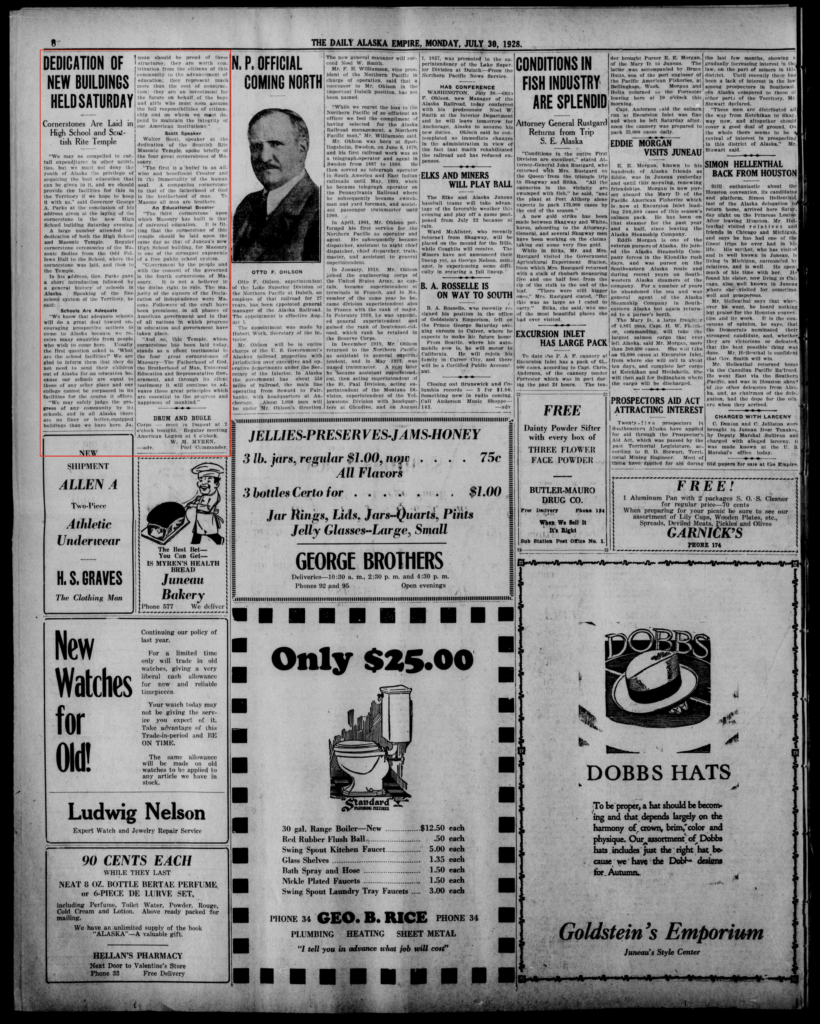Juneau’s Masonic Legacy: Cornerstones of Brotherhood and Public Life
July 30, 2025
In the heart of Alaska’s rugged capital, Freemasonry was more than ritual—it was a way of building community, honoring the past, and shaping the future. In the early 20th century, as Juneau grew from frontier town to civic hub, the Masons laid down more than just cornerstones—they laid down values.
Drawn from Alaska Daily Empire newspaper clippings between 1918 and 1928, the story of Mount Juneau Lodge No. 147 and the Scottish Rite reveals a rich tradition of public ceremony, community service, and civic leadership. This article traces how Freemasonry helped build both literal and moral foundations in Southeast Alaska.
Founding a Fraternal Footprint: Mount Juneau Lodge No. 147
Mount Juneau Lodge No. 147, Free and Accepted Masons, received its dispensation in March 1905, followed by a full charter that June. Seventeen men, including Thomas M. George, Louis L. Williams, and Herman T. Tripp, signed the original petition. These were not merely symbolic founders—they were educators, merchants, and civic leaders who would guide Juneau through decades of change.
By 1911, Scottish Rite Masonry took hold in the Territory with the establishment of the Lodge of Perfection. Within just a few years, the organization expanded to include Rose Croix, Kadosh, and Consistory chapters. From their headquarters in Juneau, these higher degrees of Masonry conferred work across the territory, including Ketchikan and Cordova.
Masonic Rites and Public Funerals
In July 1919, the Juneau community witnessed one of its most moving public ceremonies: the funeral of Z. R. Cheney, a prominent attorney and Past Exalted Ruler of the Elks Lodge. The Masonic service began at Elks’ Hall and concluded with a burial at the Masonic cemetery plot. It was conducted with full fraternal honors by both Mount Juneau Lodge and Gastineaux Lodge from nearby Douglas.
The eulogy, hymns, violin solos, and ritualized pallbearer processions exemplified the dignity Masons brought to life’s final chapter. Thomas Austin, the oldest Mason on Gastineau Channel, served as Bible bearer—an image of continuity in a fast-changing frontier.
Laying the Cornerstones of Progress
Perhaps the most publicly celebrated Masonic moment came on July 28, 1928, when Masons led a dual cornerstone ceremony for Juneau’s new High School and their long-awaited Scottish Rite Temple.
Led by Deputy Grand Master John H. Dunn, the Masonic procession marched from the Odd Fellows Hall through town accompanied by the Juneau City Band. At the school site, Governor George A. Parks delivered an address underscoring the vital link between education and citizenship:
“We may be compelled to curtail expenditures in other activities, but we must not deny the youth of Alaska the privilege of acquiring the best education… Our schools are equal to those of any other place.”
Later that evening, at the Scottish Rite Temple dedication, Masonic speaker Walter Scott reflected on Freemasonry’s four philosophical cornerstones:
- The fatherhood of God
- The brotherhood of man
- Universal education
- Representative government
He declared the new Temple a “silent testimonial” to these values—a monument built not just from stone, but from ideals.
A Home of Their Own: Building the Temple
For over a decade, Scottish Rite Masons had dreamed of owning their own Temple. By 1928, that dream became reality. The Alaska Masonic Temple Association, made up of delegates from each of the Rite’s four bodies, oversaw its construction.
The new building wasn’t just a clubhouse—it was a multi-use fraternal center, with space for Blue Lodge meetings, Scottish Rite ceremonies, and Order of the Eastern Star gatherings. It was also a beacon to Masons across the Territory.
Daily Life and Lodge Work
Freemasonry in Juneau was not an abstract ideal—it was lived. Notices in the Empire reminded Masons of degree nights and special communications. These were men deeply involved in local government, trade, and mining. They attended to the Lodge, the public square, and the needs of their neighbors.
Conclusion: Timeless Builders
In a young territory defined by gold, glaciers, and grit, the Masons of Juneau offered something enduring: a foundation of brotherhood and principle. Their ceremonies, speeches, and architecture revealed a conviction that society could be shaped—not just with timber and concrete—but with light, virtue, and mutual trust.
Today, those same values still echo through Alaska’s Masonic halls. The cornerstone may be hidden from view, but its presence is felt in every Lodge meeting, community project, and act of silent charity. For the Masons of Mount Juneau Lodge and the Scottish Rite, theirs is a legacy not merely of what was built—but why.
